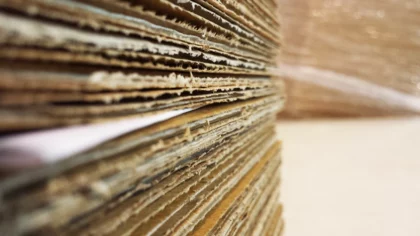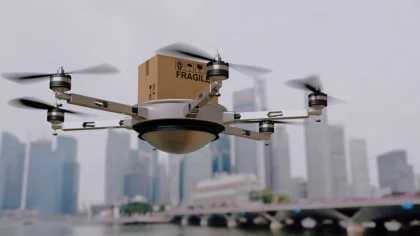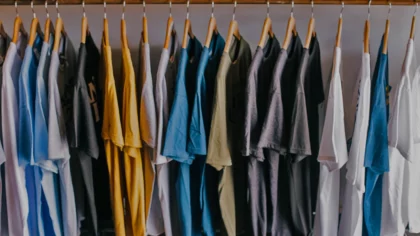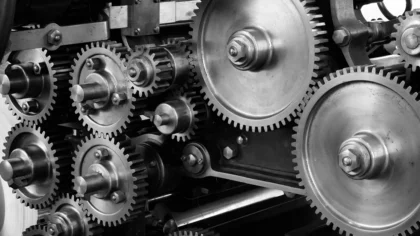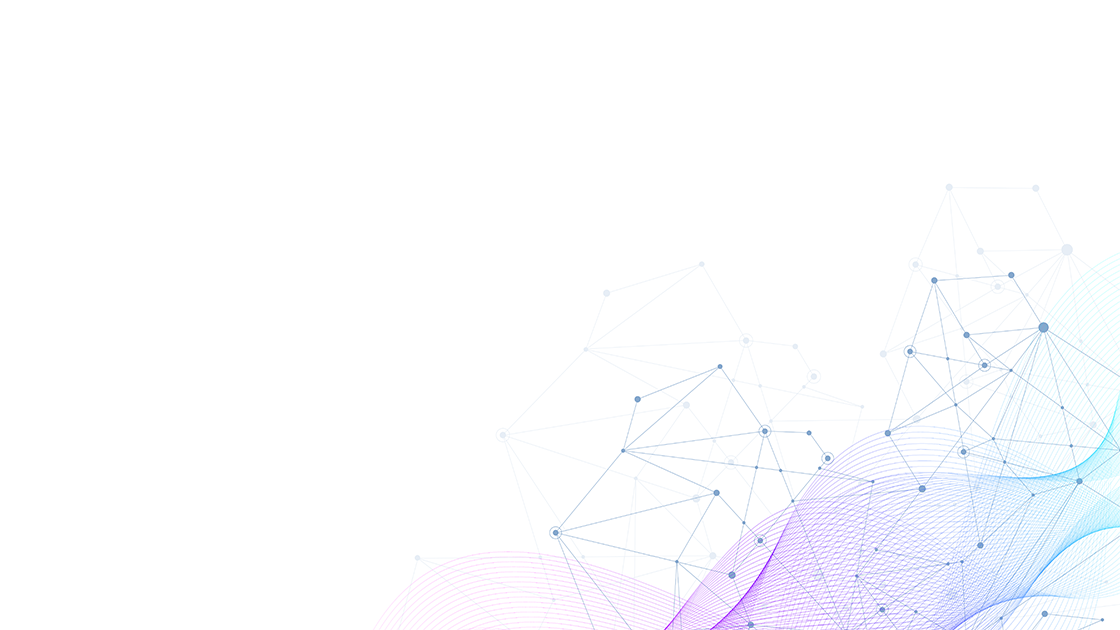The packaging sector is evolving with intelligent, eco-friendly solutions to enhance sustainability and meet consumer demands. Key trends include the internet of packaging, active packaging, nanotechnology, and sustainable materials like biodegradable and recyclable options. Technologies such as AI-driven design, smart sensors, 3D printing, and robotic packaging streamline operations and reduce costs to address challenges like rising packaging waste from online shopping.
This article was last updated in January 2025.
Innovation Map outlines the Top 10 Packaging Industry Trends & 20 Promising Startups
For this in-depth research on the Top 10 Packaging Trends and startups, we analyzed a sample of 2907 global startups & scaleups. This data-driven research provides innovation intelligence that helps you improve strategic decision-making by giving you an overview of emerging technologies in the packaging industry. In the Packaging Industry Innovation Map below, you get a comprehensive overview of the innovation trends & startups that impact your company.
What are the Current Trends in Packaging (2025)?
- Internet of Packaging
- Biodegradable Packaging
- Digital Printing
- Packaging Automation
- Active Packaging
- Custom Packaging
- Recyclable Packaging
- Edible Packaging
- 3D Printing
- Nanotechnology
Want to explore all Packaging innovations & trends?
These insights are derived by working with our Big Data & Artificial Intelligence-powered StartUs Insights Discovery Platform, covering 4.7M+ startups & scaleups globally. As the world’s largest resource for data on emerging companies, the SaaS platform enables you to identify relevant technologies and industry trends quickly & exhaustively.
Tree Map reveals the Impact of the Top 10 Packaging Trends
Based on the Packaging Innovation Map, the tree map below illustrates the impact of the top 10 packaging industry trends. Startups innovate to make the packaging more smart, connected, and interactive. This is done through QR codes, radio frequency identification (RFID) tags, augmented reality (AR), and the internet of things (IoT)-based food spoilage detection sensors.
Increasing consumer awareness encourages companies to adopt circular packaging solutions by using biodegradable and recyclable materials such as post-consumer resins, bagasse, hemp, and polylactic acid (PLA). Digital printing on the packaging is another big trend impacting packaging supply chains. With AI-assisted robots carrying out the monotonous packaging processes of picking, placing, palletizing, and inspection, packaging automation is also disrupting the industry.
Food, beverage, cosmetics, and pharma industries incorporate active packaging to tackle the challenge of product spoilage. Further, 3D printing and customized packaging enable brands to stand out and attract more consumers.
Global Startup Heat Map covers 2907 Packaging Startups & Scaleups
The Global Startup Heat Map below highlights the global distribution of the 2 907 exemplary startups & scaleups that we analyzed for this research. Created through the StartUs Insights Discovery Platform, the Heat Map reveals that the United States is home to most of these companies while we also observe increased activity in Europe, particularly the UK, as well as India.
Below, you get to meet 20 out of these 2000+ promising startups & scaleups as well as the solutions they develop. These 20 packaging innovations were hand-picked based on criteria such as founding year, location, funding raised, and more. Depending on your specific needs, your top picks might look entirely different.
Top 10 Trends in the Packaging Industry (2025)
1. Internet of Packaging
The internet of packaging transforms conventional packaging, enhancing brand-consumer interaction with technologies like QR codes, RFID, and NFC. This smart packaging serves not just as a container but as a data conduit and digital interface, offering security, authenticity, and connectivity. The global internet of packaging market size was USD 21.57 billion in 2024, grew to USD 23.66 billion in 2025, and is predicted to surpass USD 54.43 billion by 2034, with a CAGR of 9.70% between 2024 and 2034.
Augmented reality (AR) in packaging deepens customer engagement by unlocking exclusive content, discounts, and tutorials. Moreover, IoT advancements enable packaging to include diagnostic and indicator features, keeping consumers informed about the real-time condition of their products.
Langgeng Sukses Abadi Technology offers Anti-Counterfeit Solutions
Indonesian startup Langgeng Sukses Abadi Technology offers QTRUST, an anti-counterfeit solution. The startup integrates QR codes and cloud computing to allow brand owners and customers to verify product authenticity. The startup installs unique security codes on each product that allow brand owners and retailers to track items throughout the supply chain.
This is done through its web-based portal and applications. QTRUST enables brands to interact with customers, deliver the correct brand story, and run customer survey campaigns. The startup’s mobile app enables users to check the product information, location of shops, and transaction history, and get reward points.
RelnPack facilitates Reusable Packaging Options for Last-Mile Deliveries
Italian startup ReInPack facilitates reusable packaging through its smart packaging service. It allows for the delivery and collection of empty packages at the same time by employing AI-powered routing. The smart packaging is monitored via an app to track product levels and place automatic reorders. The collected packages are then sanitized and reused multiple times before being recycled. This solution creates sustainable alternatives to existing last-mile delivery practices.
2. Biodegradable Packaging
The shift away from traditional plastic, a dominant material since the early 20th century, is accelerating due to its environmental drawbacks and slow decomposition. Growing consumer awareness of the detrimental impacts of single-use plastics is fueling the demand for eco-friendly alternatives.
Substitutes such as starch, cellulose, PLA, polyhydroxybutyrate (PHB), polyhydroxyalkanoates (PHA), and other biopolymers, as well as plant-based materials from sugarcane, coconut, hemp, and cornstarch, are making significant inroads in replacing conventional plastics.
These biodegradable packaging options are not only reducing the environmental impact of packaging but also proving to be cost-effective for businesses, representing a major transition towards more sustainable packaging solutions. The market was USD 495.78 billion in 2024, grew to USD 527.51 billion in 2025, and is predicted to surpass USD 921.95 billion by 2034. This represents a CAGR of 6.40% between 2024 and 2034.
OCEANIUM develops Compostable Seaweed Packaging
OCEANIUM is a UK-based startup that manufactures products from sustainably farmed seaweed. The startup procures seaweed and then utilizes refinery technology and marine science to extract maximum value out of the plant.
It produces a bio-packaging material, OCEAN WARE, an all-natural, home-compostable bio-packaging that replaces traditional use-and-throw packaging. The earliest version of its packaging is made to be composted for soil health or for anaerobic digestion to generate energy.
LAM’ON produces Corn-based Foil Packaging
LAM’ON is a manufacturer of bio-based and compostable foils. The Bulgaria-based startup produces corn-based packaging for apparel, cosmetics and fresh produce and beverages, as well as laminating film for paper and cardboard protection. Based on PLA (polylactic acid), their products leave no micro-plastics when breaking down. LAM’ON launched in the beginning of 2024 after years of research and development, helping businesses reduce their carbon footprint while enhancing the appeal of their products.
3. Digital Printing
Printing challenges in packaging, such as precision issues, poor color quality, and high labor costs, are paving the way for digital printing innovation, a leading trend in the packaging industry. Digital printing, distinct from traditional methods like offset or flexo, doesn’t require multiple plates, streamlining the process with single-pass printing and reducing labor. This modern approach minimizes environmental impact by eliminating prepress stages and excess labeling, thus cutting down waste and inventory needs.
It allows for quicker turnaround and greater customization, enabling brands to target specific consumer subgroups with tailored packaging. Additionally, direct thermal printing, which creates labels and flexible packaging through thermal imaging without inks, is gaining traction for its efficiency and environmental benefits. Further, the digital printing packaging market was valued at USD 30.2 billion in 2024 and is projected to grow to USD 46.2 billion by 2029, with a CAGR of 8.9% during the forecast period.
Flexible Pack offers Digital Printing for Flexible Packaging
Flexible Pack is a US-based startup that offers digital printing for flexible packaging. It uses an HP Indigo digital press for printing on flexible packages, pouches, shrink sleeves, and labels. The startup’s technology offers gravure-matching quality along with a wide color scale, increased productivity, and high-quality automated finishing. The technique also makes it easier to print variable data such as barcodes or QR codes. The startup also supports printing on heat-sensitive materials as well.
Copy4LessNY provides Package & Label Printing Services
US-based startup Copy4LessNY provides printing services for packaged products and labels. It offers digital printing for corrugated boxes, cartons, and films with fast turnaround times. Further, the startup offers custom-printed labels for products.
4. Packaging Automation
Addressing challenges like productivity, accuracy, and quality control, the packaging industry is increasingly turning to automation for tasks like depanning, filling, and palletizing. The integration of robotic arms and grippers not only reduces human error but also guarantees the gentle handling of fragile items. The global packaging automation market is projected to reach USD 76.7 billion in 2024 and USD 145.8 billion by 2033, at a CAGR of 7.4%.
Furthermore, the adoption of AI-driven vision systems is on the rise. These systems capture and analyze images of final products, enhancing package quality assessment. Vision-assisted robotics also streamline product sorting, quality control, and inspection, significantly boosting operational efficiency.
Wootzano makes Dexterous Robotic Systems for Food & Vegetable Packaging
Wootzano is a UK-based startup that makes robotic systems to handle extremely delicate objects. The startup’s robotic system is capable of performing functions like trimming, picking, and packing fresh produce including tomatoes and grapes. The robots use machine learning algorithms to execute their tasks and adapt to changing environments.
Further, LiDAR is used for inspection automation and weight estimation. The robot’s hand covered with electronic skin has high sensing capabilities, allowing it to handle delicate products without squeezing them. It also predicts product shelf life, which, in turn, allows manufacturers to reduce wastage.
CoRobotics provides Co-bots for Packaging and Palletization
Polish startup CoRobotics builds packing robots to perform a wide range of repetitive packaging tasks. Their SmartPalletizer is an easy-to-program robotic solution that automates the entire palletizing and depalletizing process. The configuration is done through user-friendly software with palletizing parameters. It is also possible to replicate layers or set up different palletizing schemes.
Additionally, the user has to enter the size and number of pallets, as well as the position of the robot and the use of spacers, on the touch screen. Additionally, the SmartPalletizer configures and executes the palletization or depalletization of one or two pallets. Other features of the robot include sensors to detect the pallet and cardboard presence at the end of the line.
5. Active Packaging
According to the Food and Agriculture Organization (FAO), the challenge of global wastage of food results in substantial losses for companies. In response, active packaging is becoming an influential trend in the packaging industry, extending the shelf life of products in the food, beverage, and pharmaceutical sectors.
For instance, modified atmospheric packaging employs oxygen or ethylene absorbers and moisture regulators to maintain food freshness. Another innovative form of active packaging introduces antimicrobial agents, thwarting bacterial growth and ensuring product safety. The market was USD 29.94 billion in 2024, grew to USD 32.96 billion in 2025, and is predicted to surpass USD 78.36 billion by 2034. This represents a CAGR of 10.10% between 2024 and 2034.
SoFresh manufactures Active Packaging Films & Containers
SoFresh is a US-based packaging startup that develops food-saving packaging. The startup develops techniques for infusing food-grade natural extracts into film or containers that release controlled active vapor in the food item. Mold spores absorb the vapor, slowing down their metabolism to the point that they struggle to survive.
SoFresh’s packaging products include bread and bakery packaging, over-wrap films, lid stock materials, and barrier laminations. Its active packaging solution enables companies to extend food travel life, shelf life, and consumption time so as to mitigate spoilage and wastage.
agreenet offers Eco-friendly Packaging
Italian startup agreenet creates materials to extend the shelf life of fresh foods while minimizing environmental impact. Its active biopolymers reduce food waste and plastic usage within the food industry. Its PìFresc product is a freshness-saving pod that releases natural ingredients inside the packaging to inhibit mold growth and preserve the quality of fresh fruits. Additionally, agreenet uses sustainable, biodegradable materials tailored to meet specific customer requirements. This approach assists the food producers and consumers by reducing spoilage and maintaining product freshness for longer periods.
6. Custom Packaging
The global custom packaging market size was valued at USD 43.88 billion in 2023. The market is projected to grow from USD 45.92 billion in 2024 to USD 71.10 billion by 2032, exhibiting a CAGR of 5.62% during the forecast period. The appearance of a product plays a big role in attracting consumers to a product. Hence, the packaging holds as much importance as the product itself as a marketing tool for businesses.
The challenge for the brands is to make the packaging eye-catching to boost sales. Making the unboxing experience more personalized and unique is the key to creating a lasting impact so that customers come back to the brand. A good example is Coca-Cola’s popular “Share a Coke” campaign which had names printed on the packaging to give it a personal touch.
PACKMOJO designs 3D Models for Custom Packaging
PACKMOJO is a Chinese startup that allows businesses to design their custom packaging on its online platform without hiring a designer. Also, the platform makes it possible for the brand to preview its design in 3D and get instant price quotes.
The startup promotes sustainability by using packaging material made from 50% post-consumer waste. Further, they use eco-friendly inks like soy ink, for printing and water-based varnish instead of lamination to seal the ink.
HUIDE PACKAGING manufactures Kraft Paper Bags & Boxes
HUIDE PACKAGING is a Chinese startup that designs and manufactures custom paper packaging solutions. The startup’s in-house packaging engineers specialize in creating a structure that protects the item from damage. Also, the graphic team creates a design that aligns with the branding strategy of the company and showcases a 3D mock-up of the final design.
Before the mass production of custom packaging, the startup turns the packaging ideas into tangible prototypes. It also offers fast manufacturing of custom packaging with automated machinery and 8-color, water-based flexo press printing. Finally, designing and decorating the packaging are done with machines capable of foil-stamping, spot UV, debossing, and embossing, among others.
7. Recyclable Packaging
As countries impose bans on single-use plastics, companies are actively seeking alternative packaging materials to adhere to these regulations. One viable solution is the adoption of recyclable materials, facilitating the integration of circular packaging methods. An example of this is the utilization of post-consumer resins (PCR), which are packaging materials derived from recycled consumer waste and can be recycled themselves.
Furthermore, startups are pioneering the creation of mono-material packaging that is easily recyclable, a shift away from complex multi-layer packaging systems. This concerted effort towards sustainable packaging aligns with global environmental goals and regulations, promoting a greener and more responsible approach to packaging practices by businesses. Moreover, the global recyclable packaging market size was estimated at USD 197.08 billion in 2023 and is expected to grow at a CAGR of 6.2% from 2024 to 2030.
LittleFeet Packaging innovates with Fully Recycled Paper
US-based startup LittleFeet Packaging offers Pubble Packaging, a sustainable alternative to conventional plastic packaging using 100% recycled paper that finds uses across applications. For example, shipping cosmetics with Pubble Wrap or ensuring frozen food remains chill with Polar Pubble. The startup helps businesses achieve a balance between customer needs, environmental sustainability, and tangible returns on investment.
Ecoplasteam derives Raw Material from Waste
Ecoplasteam is an Italian startup that makes ecological raw materials from waste. The startup produces EcoAllen, a regenerated granule based on polyethylene and aluminum. It is derived by using proprietary technology to recycle tetra packs, which are made of layers of cellulose, plastic, and aluminum.
EcoAllene is an infinitely recyclable material, it is colorable and has a glittery texture. The material has high moldability and, hence, is used to make packaging bottles. EcoAllene also finds applications in the fashion, construction, and consumer product industries.
8. Edible Packaging
Packaging traditionally follows a use-and-dispose model, contributing significantly to solid waste in landfills and water bodies. In response, businesses and consumers have been shifting towards sustainable packaging in the past decade. The challenge for businesses is to find packaging that maintains its core functionality while reducing or eliminating solid waste. An innovative trend in the packaging industry is edible packaging, which addresses these concerns and promotes a closed-loop system.
Decomer Technology makes Edible Packaging Material
Decomer Technology is an Estonian BioTech startup that offers a plant-based edible and water-soluble packaging material. The startup’s material is tasteless, transparent, and hypoallergenic, and finds use in food, detergent, pharmaceutical, and agriculture packaging. Its product, HoneyDrop, is honey packaged in edible packaging material.
BlenDay is another product by the startup, a blendable plant-based superfood pillow pack, which is consumable by blending into smoothies. The outer layer of BlenDay is made of pectin and colorful superfood powders.
Kulero makes Edible Cutlery
Kulero is a German startup that produces edible cutlery. The startup meets the demand for disposable cutlery with its edible and sustainable cutlery alternatives. The edible cutlery is made from multi-grain flour, salt, and water. In addition, spices, herbs, or cocoa powder are used to add flavors.
Kulero’s vegan spoons are durable and last 30 minutes in hot liquids or soups and 60 minutes in cold meals. The startup has managed to replace 5 million plastic spoons already. It currently offers a range of products including edible spoons, edible straws, and cups, as well as compostable bowls and plates.
9. 3D Printing
The packaging industry is witnessing a burgeoning trend in 3D printing, enabling companies to swiftly create diverse prototypes and revolutionize their packaging processes in almost real time. Brands traditionally undergo expensive, time-consuming, and wasteful experimentation with packaging designs. However, 3D printing technology alleviates these challenges and promotes customized packaging solutions while completely avoiding plastic waste.
This innovative technology grants engineers and designers enhanced creative freedom, enabling them to craft high-quality packaging products. Moreover, manufacturers harness additive manufacturing techniques to produce prototypes for components used in packaging machinery, such as crafting robotic arms tailored for specific packaging lines. Further, 3D printed packaging market was valued at USD 1.28 billion in 2023 and is anticipated to grow at a CAGR of over 5% between 2024 and 2032.
Sonali Bioplastics creates Bio-based Filaments for 3D Printing
Sonali Bioplastics is a US-based startup that creates bio-based and biodegradable plastic products as alternatives to reduce plastic pollution & emissions. Its portfolio includes flexible packaging film as well as composites for molding and 3D printing, among others.
The startup uses plants as the raw material and also works with farmers to promote sustainable agriculture. Sonali Bioplastics serves various industries while catering to the growing 3D-printing industry with sustainable filaments.
Knurls creates 3D-Printed Packaging
Knurls is a US-based startup that produces 3D-printed packaging. The startup’s technology, KnurlPack, is used for packaging locally crafted or manufactured products in 3D printed packaging. The packaging can either be printed partly or fully around the product. The printing process uses materials like plastic, metal, or ceramic.
10. Nanotechnology
The global nano-enabled packaging market was valued at USD 25.6 billion in 2024 and is projected to grow to USD 86.4 billion by 2034, with a CAGR of 12.9% during the forecast period (2024–2034). Nanotechnology plays a crucial role across different stages of the packaging supply chain, from materials to product safety, authentication, and tracking. By incorporating nanoparticles into polymer chains, it improves the barrier properties and strength of packaging materials. Furthermore, it offers solutions for tracking and combating counterfeiting issues for both brands and packaging companies.
In the realm of food packaging, nanotechnology addresses growing concerns about food safety. Nanocoatings applied to packaging surfaces protect against dirt, dust, and stains. Additionally, various types of nanosensors are valuable for monitoring food freshness and detecting any chemical alterations.
CelluloTech makes Cellulose-based Materials
CelluloTech is a Canadian nanotechnology startup that focuses on cellulose-based materials. The startup’s solution replaces plastic coatings for different types of packaging with a fully renewable mono-material alternative. Its proprietary technology replaces plastics, waxes, and other non-biodegradable materials used in packaging with cellulose.
Additionally, CelluloTech’s green-chemistry process, CHROMATOGENY, makes any cellulose-based material, such as paper or cotton, permanently hydrophobic.
Peak Nano specializes in Nanolayered Films
Indian startup Peak Nano develops NanoPlex, a family of nanoscale metamaterials to enhance performance across various applications. By arranging materials in specific nanoscale configurations, NanoPlex exhibits properties not found in naturally occurring substances, enabling innovative solutions in optics, energy storage, and protective films.
NanoPlex-based capacitor films store up to four times more energy than traditional materials while being up to 50% smaller and lighter. These films also operate at higher temperatures and provide longer lifecycles.
Discover all Packaging Technologies & Startups
Emerging technologies such as LED-integrated packaging, color-changing materials, and advanced moisture control are set to revolutionize the packaging sector. Additionally, subscription models for reusable packaging are making strides in reducing waste and diminishing single-use plastic reliance. The adoption of eco-friendly inks like soy, water, and UV-based variants is also on the rise.
These packaging trends represent a fraction of the broader landscape uncovered through our rigorous, data-driven analysis. Embracing these innovative packaging industry trends can substantially enhance your competitive stance.


 WATCH THE VIDEO VERSION
WATCH THE VIDEO VERSION 



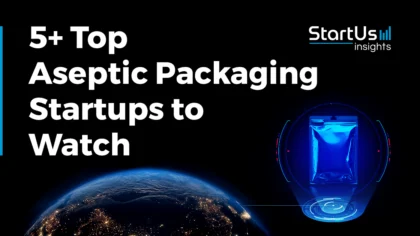
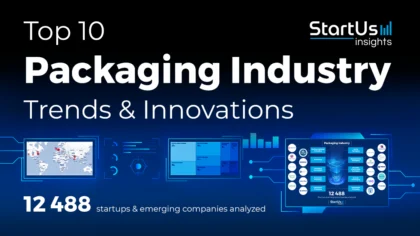
![Packaging 4.0 : Top 9 Digital Transformation Technologies to Watch [2025]](https://www.startus-insights.com/wp-content/uploads/2025/02/Packaging-4.0-SharedImg-StartUs-Insights-noresize-420x236.webp)
